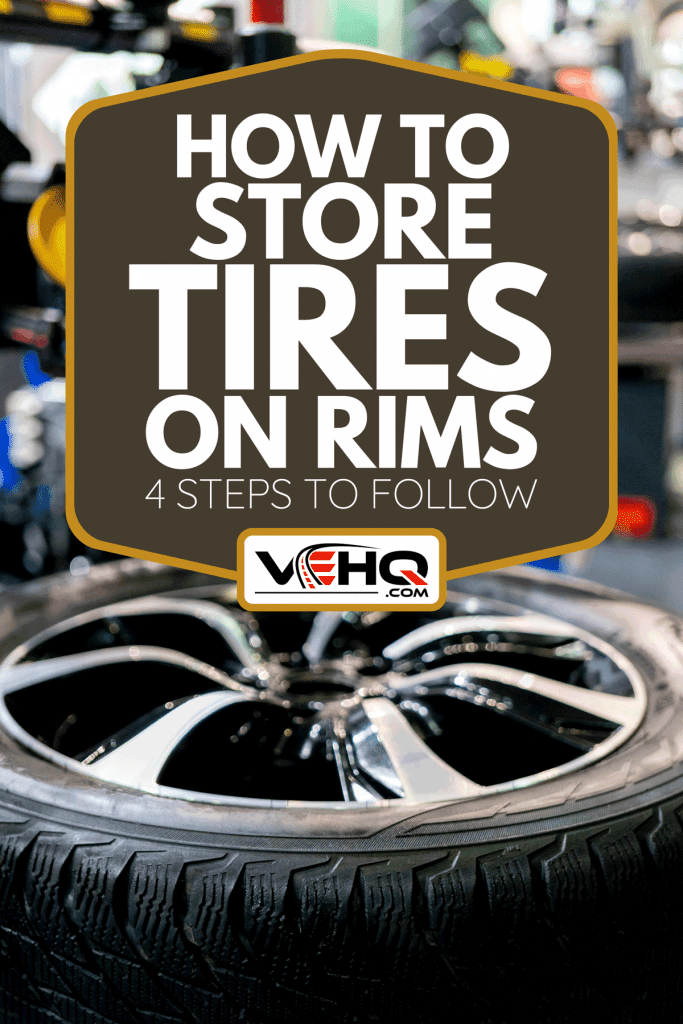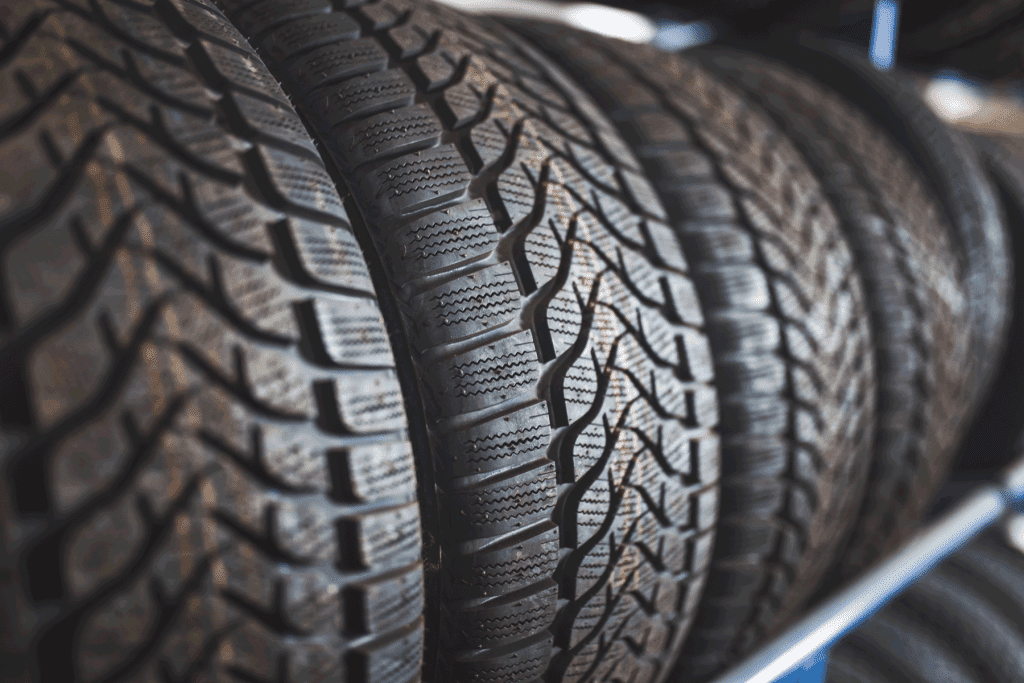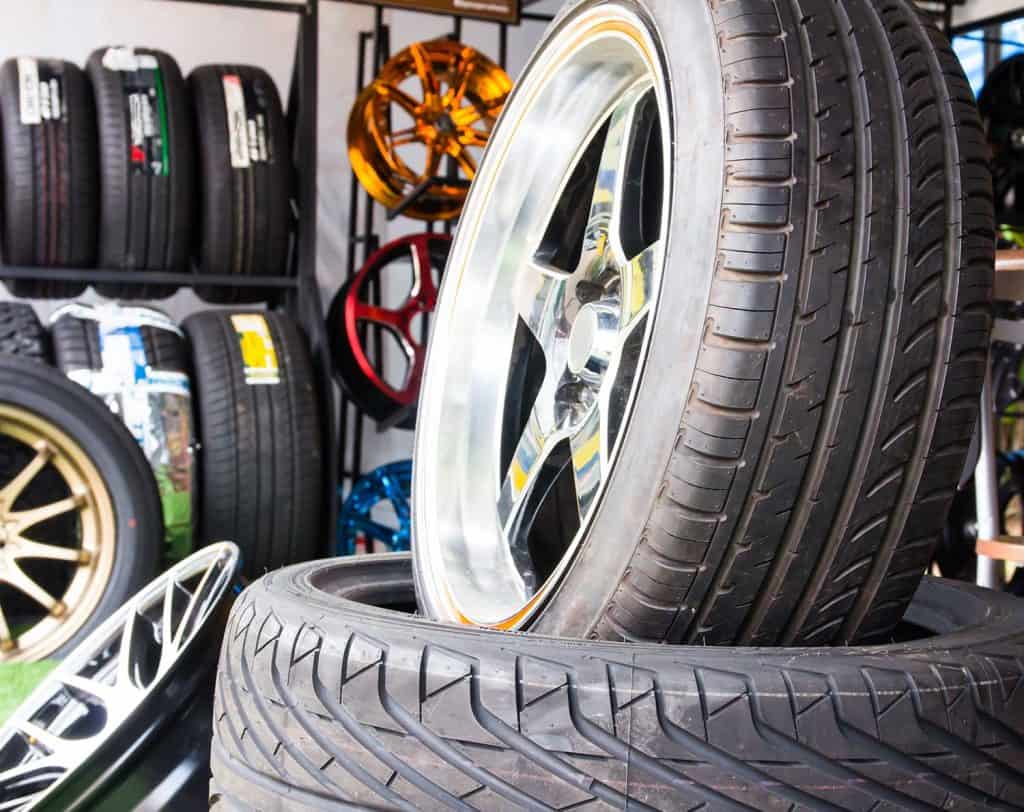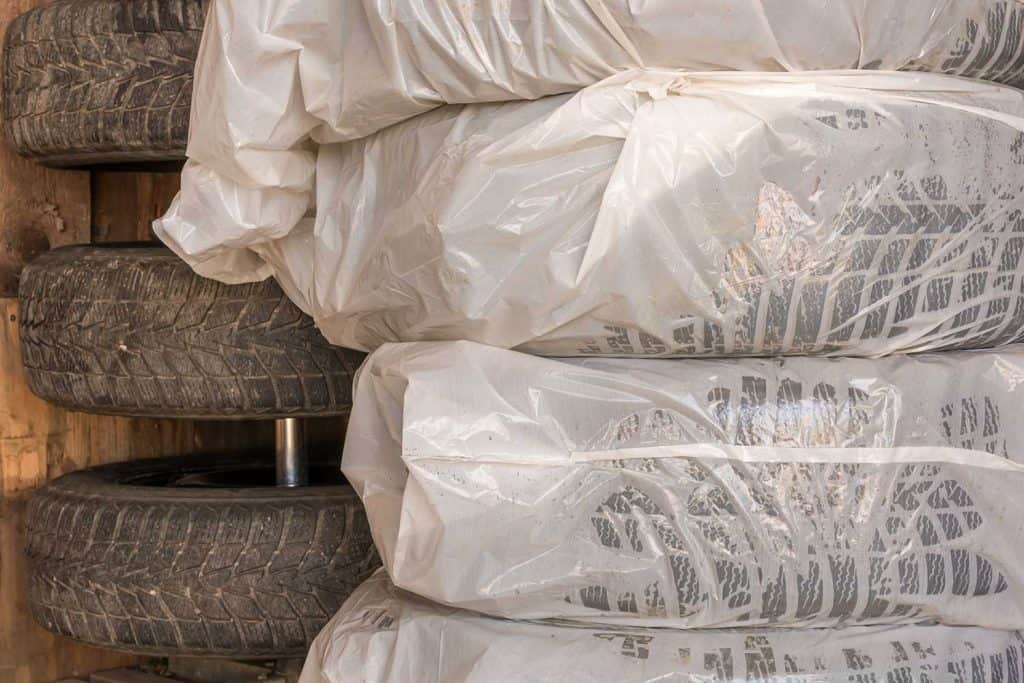Proper tire storage plays a huge part in ensuring their longevity when they're not in use. If you have snow tires or an extra set of tires that you keep on hand, it helps to know how to store them properly to prevent them from aging prematurely. We have researched the best ways to store tires on rims, and in this post, we will discuss them.
Here are the steps to take to store your tires on rims:
- Clean the tires
- Bag the tires
- Choose the best storage location
- Stack or hang them
Though tires are built to face the toughest road conditions and extreme weather, they can deteriorate if stored incorrectly. In order to ensure peak performance, make sure to take the proper steps to keep your investment in the best shape possible. Continue reading to learn how to store your tires when you're not using them.

Steps To Store Tires On Rims
Things you'll need:
- Plywood slabs (if storing on concrete)
- Cleaning cloths
- Tire dressing
- Airtight plastic bags or tire bags
- Mild cleaner
1. Clean the tires
Before storing the tires, it's always best to clean them off first. When purchasing tires from auto repair shops, you may notice that the tires may be a bit dusty.
Before storing them, grab a cleaning cloth, mild detergent, and a tire brush (if needed) to remove any dirt and debris from the surface of the tire. Be sure to check the spokes on the rim to ensure that there are no spiderwebs, rocks, or other debris inside of them.
If the tires are used, use a degreaser to remove any road grime or brake fluid from them.
Click here for 3D tire and wheel degreaser on Amazon.
After cleaning the tires, rinse them with a damp cloth and let them dry out before storing them. Even if you use a large dry towel to dry them off manually, be sure to let them sit for about 20 to 30 minutes to dry completely.
2. Bag the tires
Next, grab a plastic bag or a tire bag and place the tire inside of it. Make sure that the tire is completely moisture-free before doing so, as it can cause mold to develop on the tire during its storage. Try to remove as much air as possible beforehand and then tape the bag shut.
Click here for tire tote bags on Amazon.
3. Choose the best storage location
Find the best location in your home to store the tires. Keep in mind that the location should be relatively cool, moderately ventilated, and dry. If there is a heat source in the room, such as a radiator or floor vent, be sure to store the tires as far as way from it as possible.
This is why basements and attics make for perfect tire storage locations. However, you'll want to monitor the moisture levels of these areas to ensure that the humidity does not rise over 40% to 50% on average.
Otherwise, the tires can develop mold. On the opposite end of the spectrum, you'll also want to ensure that the humidity doesn't get too low in these areas (especially if there is a furnace in the room), as it can cause dry rot. Consider placing a hygrometer in the room to keep an eye on the room temperature and humidity.
Read more details about this hygrometer on Amazon.
Lastly, make sure that the tires will not come in direct contact with sunlight, as it can change them prematurely. You also want to ensure that the location is free from lubricants, solvents, flammables, or other chemicals that may spill on the tires.
4. Stack or hang them
When it comes to tire storage, there are a few options that you can use. You can stack the tires on top of one another, hang them from hooks, or set them side-by-side. The method that you use will depend on the size and layout of the storage location in your home.
Just keep in mind that if you stack them on top of one another, you'll want to reconfigure the tires every four weeks. Doing so will help to reduce the pressure on both sides of the rims and the tires.
Is it safe to store tires in your house?

Yes. It's completely safe to store tires in your home as long as your home doesn't experience extreme temperatures or humidity levels. On average, it's best to store tires in a location that has a relative humidity of anywhere from 40% to 50% and a temperature of anywhere from 62 to 72 degrees Fahrenheit.
Does tire dressing prevent dry rot?
Yes. Placing a dressing on your tires can help protect them from UV rays. This method is commonly used on winter tires and by people living in warmer climates.
UV rays and excessive heat are the main cause of tire dry rot. Once a tire develops rot, it is no longer drivable and will need to be replaced as soon as possible.
Click here to see Chemical Guys tire dressing on Amazon.
How many tires can you stack?

There's no industry-set limit on the number of tires you can stack on top of one another. However, if you are stacking tires on rims, you may want to limit the stack to about 4 to 6 tires.
The reason is that the rims and the tires will place more pressure on the tires located at the bottom of the stack, which can negatively affect them. However, if you are stacking tires only, there really isn't a limit to the number that you can stack.
Can I store tires outside in winter?
Most auto experts would advise that you not store tires outside in the winter. It's best to keep your tires located in an indoor location that is cool, dark, and dry. This will protect them from cracking due to harsh temperatures, UV rays, and other conditions that may limit their shelf life.
How can I prolong the life of my tires?
There are a few ways that you can prolong the life of your tires. However, it's worth noting that the type of vehicle that you have and your location can also play a significant role and how long your tires will last.
Keeping appropriate inflation levels
Inflation pressure plays a crucial role in the longevity of a tire. Tires are generally designed to run on a specific pressure, which is based on the total load of the vehicle.
If the tires exceed this pressure over an extended period of time, they can age prematurely. You can find the load chart for your tire on the manufacturer's website.
Develop a maintenance plan
Similar to other components on your vehicle, tires require routine maintenance to keep stay running optimally. A good maintenance plan can help you prevent issues that may lead to blowouts, flats, air bubbles, and other hazardous tire conditions.
Don't drive aggressively
Fast and aggressive driving can wear out your tires relatively quickly. Remember, high speeds will cause the tires to rotate at a higher rate, resulting in more friction and heat.
Ultimately this will wear down the rubber and tread on the tire faster than at lower speeds. Ever notice how race car drivers seem to constantly change their tires? This is the reason why.
Keep the vehicle properly aligned
Maintaining a good wheel alignment also plays a big role in reducing the wear and tear on a tire. If tires are not driving straight, the tread will wear off at an accelerated rate. This may result in a car that feels bumpy when you drive it or one that veers to the left or the right.
Keep the tires rotated
A tire rotation may not be something that you feel is essential to keeping your vehicle running smoothly, but it is. The temptation to avoid a tire rotation is understandable, as it may not seem as imperative as other services such as oil changes or brake replacements.
However, tire rotations help to even out the wear on your tires, as the front tires of your vehicle will generally wear out faster than the rear tires do to the engine weight.
Monitor tread wear
You'll also want to keep a close eye on the tread of your tires. If you notice that your car is starting to take longer to come to a stop when you brake or that it's sliding when there is precipitation outside, chances are the tread is worn down.
Why do people put wood under their tires?
People place wood beneath tires when the tires are stored on top of a concrete slab. The wood acts as a barrier for the tire to help protect the tires from moisture that may develop on the ground.
Wrapping Things Up
We hope that this post has helped you understand the steps to properly store tires with rims. Before deciding where to store your tires, always make sure that the environmental conditions are ideal for them.
Before you go, be sure to check out some of our other posts:





